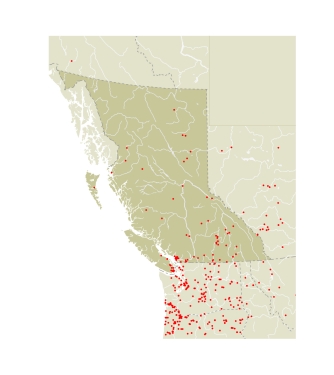Red Admirals in Colorado hibernate as both pupae and adults (Brown et al. 1957). There is one record for 6 March 1984 near Sooke, BC (Gwyn Owen, pers. comm.), which must be of successful hibernation because that date is too early for a migrant from the south. From mid-April to June adults migrate into BC and lay eggs, with the next generation of adults emerging in late July and being in flight into October. Whether a southward migration occurs is unknown. Red Admirals will sometimes feed on the juice of split fruit such as plums (CSG). First instar larvae fold a small, just expanding leaf upward around themselves, and feed within. Second to fifth instar larvae fold nettle leaves downward into a "tent" and feed from within. In forming the tent they usually cut the midrib of the leaf near the base and cut the leaf membrane on both sides of the midrib, so that the leaf droops downward, and then fold the leaf around the lower surface. They sometimes fold a large nettle leaf and pupate within that (Edwards 1883, 1885b).
The primary larval foodplant in BC is stinging nettle (Harvey 1908; CSG). The only other member of the Urticaceae that occurs in BC, Parietaria pennsylvanica, is used in New York (Shapiro and Shapiro 1974). Hop (Humulus lupulus) is grown in the Fraser Valley and is used as a larval foodplant outside BC, where Boehmeria cylindrica and Parietaria debilis are also used (Scudder 1889a).
|
|
